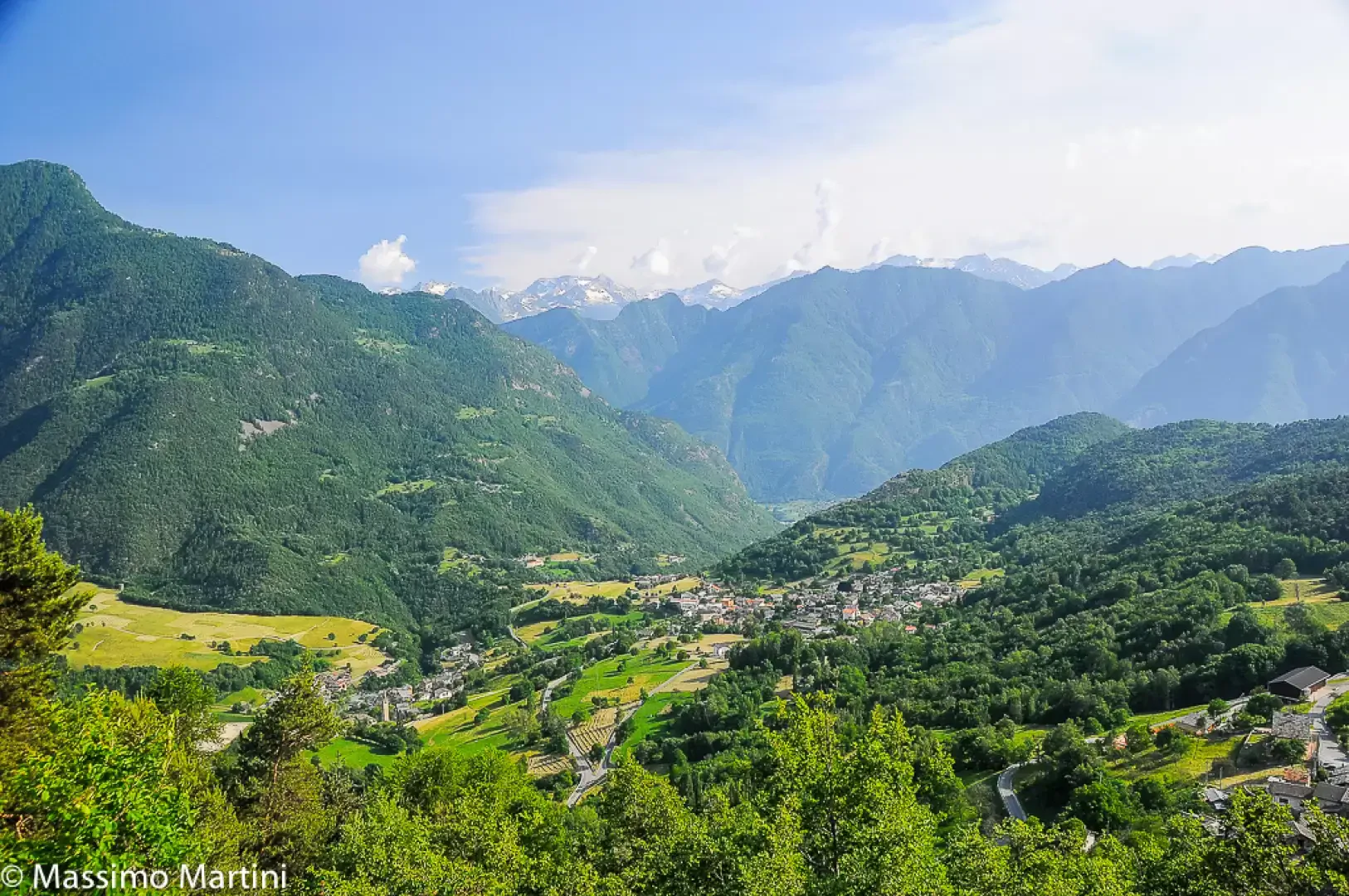Challand-Saint-Victor

Access
Challand-Saint-Victor, located in the lower Val d'Ayas in the Aosta Valley, can be reached by various modes of transport. For those travelling by car, the Turin-Aosta motorway is the main access artery. Exit at the Verrès toll booth and continue along the Val d'Ayas Regional Road until you reach the municipality. The provincial road network is well developed, with roads effectively connecting the various localities in the valley.
For those who prefer public transport, the nearest railway station is Verrès, served by the Turin-Aosta line. From the station, there is a bus service connecting Verrès to Saint-Jacques, with intermediate stops at Challand-Saint-Victor, Challand-Saint-Anselme, Brusson and Champoluc. Bus timetables can be found on the Visit Ayas website.
The nearest airports are Turin-Caselle Airport, about 107 km away, and Milan-Malpensa and Milan-Linate airports, 169 km and 191 km away respectively. From the airports, it is possible to rent a car or use the public transport services to reach Challand-Saint-Victor.
The provincial road network is characterised by well-maintained roads that pass through evocative mountain landscapes, making the journey to Challand-Saint-Victor pleasant and accessible in all seasons.
Introduction
Challand-Saint-Victor is a small municipality located at the entrance to Val d'Ayas, in the Aosta Valley. This charming area, rich in history and natural beauty, lies at an altitude of about 750 metres and has just over 500 inhabitants. Immersed in a suggestive landscape, characterised by forests, streams and mid-altitude mountains, the municipality offers a perfect balance of nature, culture and local traditions. An ideal place for lovers of hiking and outdoor activities, Challand-Saint-Victor is also an interesting destination from a historical point of view, with testimonies dating back to prehistoric and medieval times.
Description
Located just a few kilometres from Verrès, Challand-Saint-Victor is the first municipality one encounters going up the Val d'Ayas. Its territory is crossed by the Évançon torrent, which at the hamlet of Isollaz gives rise to the spectacular waterfall of the same name, one of the most impressive in the region. The surrounding environment is characterised by rich vegetation, with coniferous and broadleaf forests that offer changing scenery depending on the season. Dominating the landscape are medium-altitude peaks such as Monte dell'Aquila and Becca Torché, ideal for panoramic hikes.
The history of the municipality is very ancient: the area was already inhabited in prehistoric times, as demonstrated by the presence of a dolmen at Col d'Arlaz, a pass linking the lower Val d'Ayas to the central valley. In the Middle Ages, Challand-Saint-Victor was linked to the affairs of the Challant family, one of the most influential families in the Aosta Valley. The Castle of Villa, now in ruins, was one of the residences of Ebalo I of Challant and retained its importance until the 15th century. Another important defensive element was the Bonot Tower, located near Isollaz, which served as a signalling point between Villa Castle and Verrès Castle.
The economy of the municipality is traditionally based on agriculture and animal husbandry, with a focus on the production of typical cheeses such as fontina. Woodworking is another important activity, with the handcrafted production of traditional objects, including the Valle d'Aosta clogs, known as sabots. In addition, the presence of a hydroelectric power plant in Isollaz testifies to the importance of exploiting natural resources for the production of sustainable energy.
Local culture and traditions play a fundamental role in the life of the village. Among the most heartfelt events is the Bataille des Reines, the traditional cow fight that takes place near Lake Villa. The Festa del Lago, organised on the second Sunday in August, celebrates the beauty of this protected natural area, while the Travail de Veillà (14 August) is a re-enactment of ancient crafts.
In terms of tourism, Challand-Saint-Victor offers numerous opportunities for hiking enthusiasts. The Ru d'Arlaz is a charming trail that follows the route of an old irrigation canal and leads to the Orbeillaz waterfall and the Flambeau d'Arlaz, a curious natural monolith. The Villa Lake Nature Reserve, established in 1992, is a protected area of great value, where the rare white water lily grows. The lake, surrounded by woods and reeds, is an ideal place to relax and observe the local fauna.
Challand-Saint-Victor is therefore a perfect destination for those wishing to discover an authentic corner of the Aosta Valley, amid history, nature and age-old traditions. Whether exploring ancient ruins, strolling along scenic trails or immersing oneself in the local culture, this small municipality has much to offer anyone who wants to get to know it closely.
Information
Area: 25.00 sq. km
Altitude: 744m
Maximum elevation: 3,015m - Tchalland
Number of inhabitants: 550 (as of 31.12.2020)
Name in dialect: Tchallan
Inhabitant name: Challandins
Patron Saint: Saint Victor of Solothurn (30 November)
Neighbouring municipalities: Arnad, Challand-Saint-Anselm and, Émarèse, Issime, Montjovet, Verrès
Website: www.comune.challand-st-victor.ao.it
Points-of-interest
- protected-areas - map
- alpeggi - map
- villages - map
- colli - map
- vette - map
- cultural-goods - map
- lplaces-of-cult - map